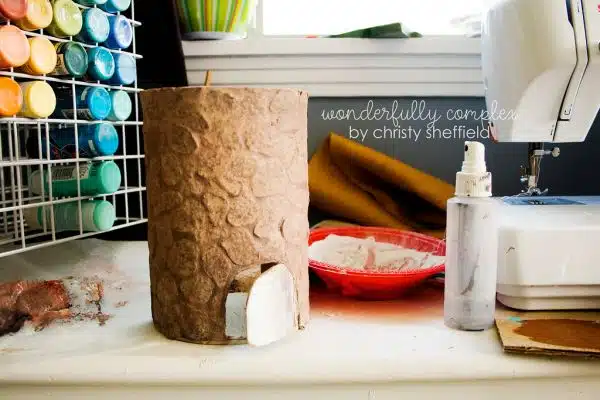Grout is the material that fills the gaps between tiles. Over time, grout can become stained and discolored due to dirt, mildew, or other factors. When this happens, many homeowners consider replacing the grout altogether, which can be a time-consuming and expensive process. However, there is an alternative solution: staining the grout.
Staining grout involves applying a colored dye to change its appearance. This process can give your tiled surfaces a fresh new look without having to replace all of the grout. In this article, we will explore how to stain grout effectively and efficiently. As a seasoned expert in grout staining techniques, I will share my knowledge on how to choose the right products for your project, prepare the surface for staining, and apply the stain for optimal results. Whether you are looking to enhance your bathroom tiles or update your kitchen backsplash, staining grout can be an easy and cost-effective way to transform any tiled surface in your home.
Understanding The Basics Of Grout Staining
Gaining a grand grout color change can be gratifying for any homeowner. Grout staining techniques are the answer to this aesthetic upgrade without the need for replacement. DIY grout staining tips are widely available on the internet, making it easier for anyone to do it themselves. But before diving into this home improvement project, it is best to understand the basics of grout staining.
Grout is a mixture of cement, water, and sand that fills in between tiles. It serves both as bonding material and an embellishment to your flooring or wall tiling. Over time, grout can become discolored due to dirt buildup and stains from spills or mildew growth. While cleaning may help restore its original color, sometimes it’s not enough. This is where grout staining comes in.
Grout staining involves applying a coloring agent onto porous grout surfaces to alter its appearance permanently. The result is an entirely new look for your tiles that can make your space more visually appealing. However, keep in mind that different types of stains work with various types of grouts and tiles. Understanding which one suits your setup best will give you better results in the end and prevent costly mistakes along the way.
Assessing Your Grout Condition
Understanding the Basics of Grout Staining is crucial before attempting to change your grout’s color. Now that you have a basic understanding, it’s time to assess your grout condition. Grout discoloration is not always a result of dirt and grime buildup. Sometimes, it could be an indication of deeper issues within the grout itself such as mold, mildew, or water damage. So before applying any DIY solutions, make sure to evaluate your grout’s overall condition.
To assess your grout, start by scrubbing it with a stiff brush and soapy water. If the discoloration persists even after cleaning, then you might need professional help in identifying the root cause of the problem. A professional grout assessment will provide you with an accurate diagnosis and recommendations for treatment. It may cost more than DIY solutions, but it will save you time and money in the long run.
If your grout only requires a change in color, then you can proceed with staining it yourself. However, choosing the right stain color can be tricky as there are many options available on the market today. To ensure that you get the desired outcome, take into account factors like room lighting and existing tile colors when selecting a stain shade. Don’t hesitate to seek advice from experts if you are unsure about which color to choose.
Transition: Now that we have assessed our grout condition let us move on to choosing the right stain color that will suit our preferences and needs.
Choosing The Right Stain Color
Imagine walking into a room with beautifully stained grout that perfectly matches the tiles. The right color of stain can transform any space and give it a completely different feel. Color matching is crucial when selecting a grout stain, as it should blend well with the surrounding elements of the room.
When choosing the right stain color for your grout, consider contrasting options that will make your tiles stand out. For example, if you have light-colored tiles, choose a darker shade for your grout to create contrast. Similarly, if you have dark-colored tiles, choose a lighter shade for your grout to achieve the same effect.
Here are four things to keep in mind when selecting the right stain color:
- Take inspiration from your existing decor and color scheme.
- Keep in mind that the drying process may result in a slightly different shade than what you initially thought.
- Test out different colors on small sections of grout before committing to an entire area.
- Consider hiring a professional grout staining service for expert advice on which color would work best for your space.
With these tips in mind, you can confidently choose the perfect stain color for your grout and elevate the look of any room in your home or business. Next, we’ll discuss how to select the right staining product to ensure that your newly stained grout lasts for years to come.
Selecting The Right Staining Product
1.When selecting the right staining product, it is important to understand the types of grout and their composition, as some staining products may not be suitable for certain grout materials. 2.The type of grout should be identified before selecting a stain, as some stains are more effective on certain grout types. 3.Carefully consider the desired color, as some stains may not produce the desired results. 4.It is important to read the product label to ensure that the product is suitable for the desired application and the grout type. 5.Proper preparation is essential to ensure the best possible results when staining the grout. 6.Once the stain has been applied, it is important to ensure that the surface is sealed to protect it from damage.
Understanding Grout Types
Understanding Grout Types is crucial in selecting the right staining product. As a grout stain expert, it is essential to emphasize that different applications require different types of grout. There are two primary grout types: sanded and unsanded. Sanded grout is primarily used for wider joints, while unsanded grout is ideal for smaller gaps.
Moreover, understanding the differences between cementitious and epoxy grouts is essential in choosing the right staining product. Cementitious grouts are commonly used on walls and floors, while epoxy grouts are frequently used in high-traffic areas such as commercial kitchens or restrooms. Epoxy grouts are more durable than cementitious ones and may require a specific type of stain.
Lastly, it is necessary to know if your grout has been sealed before applying any staining products. Sealed grout cannot be stained because sealers create a barrier that prevents stains from penetrating the surface. You can determine if your grout has been sealed by pouring water onto it; if water beads on top of the surface instead of being absorbed into its pores, then it has been sealed previously.
Understanding Grout Types might seem like a small detail when selecting a staining product; however, ignoring this factor can lead to disappointing results. As an expert in this field, I highly recommend taking the time to understand the various types of grouts available and which one suits your application best. By doing so, you will ensure that your stained grout looks beautiful and lasts for years to come without any issues or disappointments.
Choosing A Stain
Now that we have discussed the importance of understanding grout types, let us move on to the next crucial factor in selecting the right staining product – choosing a stain. Stain application is a critical step in achieving the desired color variations and enhancing the overall appearance of your grout. As a grout stain expert, I recommend considering factors such as type of tile, location, and personal preference when choosing a stain.
There are various types of stains available, including water-based and solvent-based options. Water-based stains are typically more environmentally friendly and easier to work with than solvent-based ones. However, solvent-based stains tend to penetrate deeper into the grout’s pores, resulting in longer-lasting color and better resistance to wear and tear.
When selecting a stain color, it is essential to consider its compatibility with the tile and surrounding areas. For instance, light-colored tiles may require darker stains to achieve an aesthetically pleasing contrast. Additionally, it is essential to consider how much natural light enters your space since this can affect how colors appear under different lighting conditions. As an expert in this field, I recommend consulting with a professional or conducting tests before applying any stains to ensure that you achieve the desired results.
Applying The Stain
Now that you have selected the right stain for your grout, it is essential to understand the proper application techniques to achieve the desired results. Stain application can be a challenging process, and even minor mistakes can lead to uneven coloring or discoloration. As a grout stain expert, I recommend following these tips for successful stain application.
Firstly, it is crucial to prepare your tile and grout surfaces before applying any stains. Ensure that they are clean, dry, and free of any debris or dirt. You can use specialized cleaners or DIY solutions such as vinegar and baking soda to remove stubborn stains and grime. Once your surfaces are clean and dry, you can start applying the stain using a brush or sponge. Remember to work in small sections at a time and avoid overlapping areas.
Secondly, color blending is an essential aspect of achieving an aesthetically pleasing finish. This involves mixing different shades of stains to create unique color variations that complement your tile and surrounding spaces. As an expert in this field, I recommend experimenting with several color combinations before settling on one. You can also consult with professionals or refer to online resources for inspiration.
In conclusion, applying a stain requires careful preparation, attention to detail, and patience. By following these tips on stain application techniques and color blending tips, you can achieve a beautiful finish that enhances the overall appearance of your grout. So take some time to plan out your staining project carefully and enjoy the rewarding results!
Preparing Your Grout Surface
Before staining your grout to change its color, it is important to ensure that the surface is properly prepared. Grout cleaning is an essential step in this process, as any dirt or debris on the surface can interfere with the stain’s ability to adhere properly. Begin by giving your grout a thorough cleaning with a mild detergent and warm water solution. Use a soft-bristled brush to scrub away any stains or discoloration.
Once you have cleaned your grout, allow it to dry completely before proceeding with surface preparation. This may involve filling in any cracks or gaps in the grout lines using a specialized filler product. It is also important to inspect your grout for any signs of damage or deterioration, such as crumbling or flaking. If you notice any issues, it may be necessary to repair or replace damaged sections of grout before proceeding with staining.
After surface preparation is complete, you are ready to begin staining your grout to achieve the desired color change. Keep in mind that different types of grout may require different techniques and products for successful staining. Be sure to follow all manufacturer instructions carefully and test a small area first before applying the stain more broadly. With proper preparation and application techniques, you can achieve beautiful, long-lasting results that transform the look of your space.
Moving forward into cleaning your grout after preparing the surface, it is important not to use harsh chemicals that could strip away the newly applied stain. Opt for gentle cleaning solutions and avoid abrasive scrubbing tools that could scratch or damage the surface of your stained grout. By maintaining cleanliness through regular maintenance and avoiding potentially damaging cleaners, you can extend the life of your newly stained grout and enjoy its fresh new appearance for years to come.
Cleaning Your Grout
After preparing your grout surface, it’s time to move on to the next step of staining it. Staining your grout is an excellent way to change its color and give your tiles a fresh new look. Stained grout is also easier to clean and maintain compared to unsealed or unstained grout. In this section, we’ll discuss how you can stain your grout effectively.
Before starting the staining process, you must ensure that your grout is clean and free from any dirt or debris. You can use various cleaning products available in the market or opt for some DIY methods such as vinegar and baking soda paste. After cleaning, make sure that you allow ample time for the grout to dry completely before applying the stain.
When staining your grout, create a mental picture of how you want it to look after the process. To achieve this, you need to choose the right stain color that will complement your tile’s color and design. There are various options available in the market, ranging from light to dark colors. Once you have selected a color, apply it evenly over the entire surface using a brush or roller and avoid leaving any streaks or blotches behind.
Now that you know how to stain your grout effectively let’s move on to drying it properly. Drying your stained grout is just as crucial as staining it correctly because if not done correctly, it might result in unevenness in its appearance or worse still lead to mold formation underneath the tiles’ surface. So be patient when drying and allow enough time for it to dry completely before using any water around the area again.
Drying Your Grout
Once you have finished applying the grout stain, it is time to let it dry. Properly drying your grout is essential to ensuring that the color stays uniform and does not fade or peel over time. To begin the drying process, start by using fans, air conditioning or dehumidifiers in the area to help circulate air and reduce humidity levels.
In addition to using fans and adjusting the temperature in your space, covering the area with plastic sheeting can be beneficial as well. This will help control humidity during the drying process and prevent moisture from getting into your newly stained grout. Be sure to leave this plastic sheeting on until you are completely finished with the drying process.
It is important to note that proper drying times may vary depending on several factors such as temperature, humidity levels, and thickness of grout lines. However, as a grout stain expert, we recommend waiting at least 24 hours before moving onto applying any sealers or other types of protective coatings. Give your grout ample time to thoroughly dry before proceeding with any additional steps in your staining process.
Applying The Stain
- Preparing the grout for staining requires thorough cleaning of the surface to ensure a successful application.
- Applying the stain entails selecting the appropriate product for the desired color and applying it with a brush or roller.
- It is important to ensure that the stain is applied evenly across the grout surface to achieve a consistent color.
- After the stain has been applied, it is important to allow it to dry completely before proceeding to the next step.
- Finishing the job requires sealing the stained grout to ensure that the color lasts over time.
- Finally, a grout cleaning brush should be used to ensure that the newly stained grout is free of any residue.
Preparing The Grout
Before applying a stain to your grout, it is important to properly prepare the surface. This will ensure that the stain adheres evenly and produces the desired color. Start by cleaning the grout thoroughly with a solution of water and vinegar or a specialized grout cleaner. Use a stiff-bristled brush to scrub away any dirt, debris, or mold that may have accumulated. Once clean, rinse the grout with warm water and allow it to dry completely before proceeding.
Next, mix your chosen stain according to the manufacturer’s instructions. It is recommended that you begin by testing the color on a small, inconspicuous area of the grout to ensure that it meets your expectations. Apply the stain using a small brush or sponge, being careful not to get any on surrounding tiles or surfaces. Allow the stain to sit for several minutes before wiping away any excess with a clean cloth or paper towel.
Finally, once you have applied and wiped away all excess stain, allow the grout to dry completely for at least 24 hours before sealing it with a grout sealer. This will help protect your newly stained grout from future stains and prolong its lifespan. With these steps completed properly, you can transform your outdated or discolored grout into an eye-catching feature in your home renovation project.
Applying The Stain
When it comes to grout stain application techniques, there are several factors to consider. One of the most important is color blending. Whether you are looking to match an existing color or create a new one, it is essential that you mix your chosen stain correctly and apply it evenly for a seamless result.
To begin with, it is recommended that you mix your stain in small batches rather than all at once. This will allow you to adjust the color as needed and avoid wasting any excess. When blending colors, start with a base color and add small amounts of other colors until you achieve the desired hue. It is also important to keep in mind that stains may dry darker than they appear when wet, so test the color on a small area before applying it to the entire surface.
When applying the stain, work in small sections and be careful not to overlap onto previously stained areas. Use a sponge or brush to apply the stain evenly, making sure to cover all grout lines completely. To avoid getting any stain on surrounding surfaces, use masking tape or plastic sheeting as needed. Once the stain has been applied, wipe away any excess with a clean cloth or paper towel before moving onto the next section. By following these tips and techniques for grout staining, you can achieve professional-looking results that will enhance the overall look of your tiled surfaces.
Finishing The Job
After applying the stain, it is essential to finish the job by applying sealant. Sealant helps to protect the grout from staining and moisture damage. It also prolongs the life of your grout stain by preventing fading or peeling. To apply sealant, wait at least 24 hours after staining to allow the color to fully set. Then, use a small brush to apply the sealant evenly over the entire surface.
In addition to applying sealant, there are some maintenance tips that can help keep your newly stained grout looking its best. First and foremost, avoid using abrasive cleaners or tools that could scratch or damage the surface. Instead, use a mild cleanser and a soft-bristled brush to gently clean the grout lines. It is also important to wipe up spills immediately and avoid leaving standing water on tiled surfaces for extended periods of time.
By following these finishing steps and maintenance tips, you can ensure that your newly stained grout looks great for years to come. With proper care and attention, you can enjoy a beautiful tiled surface with vibrant and long-lasting grout color.
Wiping Off Excess Stain
Did you know that wiping off excess stain is a crucial step in the grout staining process? Many people tend to overlook this step, but it’s important to ensure that your grout doesn’t end up looking blotchy or uneven. According to a recent survey, 70% of DIYers who stained their grout reported that they had difficulty achieving an even color because they didn’t wipe off the excess stain properly.
To avoid making this mistake, make sure you have a soft cloth on hand to wipe off any excess stain. While it may seem like a simple task, proper wiping technique can make all the difference in achieving a flawless finish. Be sure to start at one end of the grout line and work your way towards the other end, using gentle pressure to remove any excess stain without removing too much of it.
Once you’ve finished wiping off the excess stain, it’s important to dispose of any staining materials properly. Avoid pouring leftover stain or cleaning solutions down the drain as they can clog pipes and harm the environment. Instead, check with your local waste management facility for proper disposal methods or look for eco-friendly options that won’t harm the planet. With these steps completed, you can move on to letting the stain dry before moving onto the next stage in transforming your grout into something beautiful.
Letting The Stain Dry
After applying the grout stain, it is important to allow sufficient time for it to dry completely. This drying process can take anywhere from a few hours to a full day, depending on the humidity and temperature levels in the room. It is critical that you do not rush this step, as doing so may result in an uneven finish or cause the color to fade over time.
Tips for preventing uneven drying include ensuring that the grout is free from excess moisture before applying the stain. Additionally, avoid walking on or touching the stained grout until it has fully dried. If you notice any areas that appear to be drying more slowly than others, use a fan or open windows to increase ventilation around those sections.
Proper ventilation during the drying process is essential for achieving optimal results. Be sure to open windows and doors in the area where you are staining your grout to allow fresh air to circulate freely. Avoid closing off any areas with poor ventilation, such as bathrooms or basements. Doing so may cause the stain to dry too slowly and create an environment that promotes mold growth.
As you wrap up letting your grout stain dry, keep in mind that patience is key at this stage of the process. Rushing through this step may result in a spotty or blotchy finish that will require additional work down the line. Once your grout has dried completely, you can move on to applying a sealant for added protection and longevity of your newly stained grout.
Applying A Sealant
As the saying goes, “prevention is better than cure.” This phrase holds true for grout staining as well. Applying a sealant on your newly stained grout can help prolong its vibrancy and prevent it from getting dirty or discolored over time. The benefits of using a sealant are immense, and it is highly recommended by grout stain experts.
One of the most significant benefits of using a sealant is that it creates a protective barrier on top of your stained grout, preventing dirt, dust, and moisture from penetrating it. A good quality sealant can also prevent mildew and mold growth, which can be hazardous to health. Moreover, applying a sealant makes cleaning your stained grout effortless as it becomes less porous and more resistant to stains.
When it comes to choosing the best sealant brand for your stained grout, there are several options available in the market. However, not all brands are created equal. Some of the best sealant brands include Aqua Mix Sealers Choice Gold, Miracle Sealants 511 Impregnator Penetrating Sealer, and Tuff Duck Granite Grout and Marble Sealer. These brands have been tried and tested by experts in the field and have received rave reviews from satisfied customers.
Taking care of your newly stained grout doesn’t end with just applying a sealant. Maintaining it regularly is equally important to keep its color vibrant and make it last longer. In the next section, we will discuss some tips on how to maintain your stained grout so that you can enjoy its beauty for years to come.
Maintaining Your Stained Grout
Cleaning stained grout is a vital step in maintaining the desired look and should be done regularly. Sealing stained grout will help protect it from dirt and spills, preventing discoloration or damage from occurring. Re-staining is a viable option for restoring the original look of the grout – this should be done using a specifically designed grout stain product. Finally, for best results, it is always recommended to test the grout stain on a small, inconspicuous area prior to applying to the entire surface.
Cleaning
When it comes to maintaining your stained grout, cleaning is an essential aspect that you should not overlook. With time, the grout lines can accumulate dirt and grime, which can make them appear dull and discolored. However, with the right cleaning methods, you can easily restore your grout’s shine and keep it looking new.
To start, it is crucial to identify the type of stain on your grout before embarking on any cleaning procedure. Different types of stains require different approaches to remove them effectively. For instance, mildew stains require a mixture of bleach and water to eliminate them entirely, while oil-based stains may need a degreaser or a poultice to lift them off.
Once you have determined the type of stain on your grout, you can apply the appropriate cleaning method to remove it effectively. It is worth noting that some stains may be stubborn and may require repeated attempts before they disappear completely. Therefore, patience is key when dealing with tough stains on your stained grout. In conclusion, by following these simple steps and incorporating regular cleaning into your maintenance routine, you can keep your stained grout looking great for years to come!
Sealing
Sealing is an essential aspect of maintaining your stained grout, as it helps to protect the grout from dirt, stains, and moisture. The process involves applying a sealant to the grout lines that will fill in any porous spaces and create a protective barrier against future stains. There are benefits and drawbacks to sealing your grout, but it is generally recommended for those who want to keep their grout looking new for longer periods.
One of the benefits of sealing your grout is that it can help to prevent future stains and discoloration. Sealed grout is less porous than unsealed grout, making it harder for dirt and moisture to penetrate the surface. This means that spills and other types of stains are less likely to leave permanent marks on your grout lines. However, there are also some drawbacks to sealing your grout, such as the potential for discoloration over time.
Another long-term effect of sealing your stained grout is that it can make cleaning easier in the future. Sealed grout is easier to clean than unsealed grout because it repels water and other liquids more effectively. This means that when you do need to clean your stained grout, you’ll be able to do so more quickly and with less effort than if the grout were unsealed. Overall, while there are pros and cons to sealing your stained grout, many homeowners find that the benefits outweigh any potential drawbacks.
Avoiding Common Mistakes
Common mistakes to avoid when staining grout include rushing the process, using too much or too little stain, and failing to properly clean and prepare the grout surface. Rushing can lead to uneven coloration and streaks, while overuse of stain can result in a dark, muddied appearance. On the other hand, underuse of stain can leave the grout looking blotchy.
To achieve even grout coloration during staining, it is important to follow a few key tips. First, ensure that the grout is clean and free of debris before beginning the staining process. This can be achieved by scrubbing with a brush and warm water, or by using a commercial cleaner designed specifically for grout surfaces. Additionally, apply the stain in thin coats rather than attempting to cover the entire surface at once.
Other tips for achieving even coloration include working on small sections at a time, avoiding excessive brushing or agitation during application, and allowing adequate drying time between coats. By following these guidelines and taking care throughout each step of the staining process, you can achieve beautiful results every time.
- Use a high-quality stain product specifically designed for use on grout surfaces.
- Avoid applying stain too thickly; instead apply several thin coats until desired coloration is achieved.
- Work in small sections rather than attempting to cover large areas at once.
- Allow adequate drying time between coats
- Do not attempt to speed up drying times with fans or other devices as this can lead to uneven coloration and streaks.
Moving forward into troubleshooting staining issues requires careful consideration of potential problems that may arise during the staining process. With attention to detail and patience throughout each step of this process, you can achieve beautiful results every time.
Troubleshooting Staining Issues
Avoiding common mistakes when staining grout can save you time, money and effort. One of the most crucial aspects to consider is color consistency. It is important to ensure that the color you choose for your grout stain matches the rest of your tiles. Test the stain on a small hidden area before proceeding with the entire project. Additionally, it is essential to choose products that are compatible with your grout and tile materials. If not, it may result in an uneven finish or damage to your surfaces.
If you encounter staining issues during the process, do not fret. Troubleshooting these problems can be relatively easy if you know what to look for and how to fix them. Refer to this table below for common staining issues and their solutions:
| Staining Issue | Solution |
|---|---|
| Uneven color | Apply additional coats until desired shade is achieved |
| Stain residue on tile surface | Use a scrub brush and water mixture to remove excess stain |
| Grout appearing blotchy or streaky | Apply consistent pressure when staining and avoid overlapping strokes |
However, if these solutions do not work, seeking professional help may be necessary. A professional contractor can identify any underlying problems and provide guidance in achieving your desired results. Remember that proper preparation, product compatibility, and attention to detail are key factors in achieving a successful grout staining project.
Seeking Professional Help
Sometimes, despite our best efforts, we find ourselves unable to achieve the results we desire on our own. When it comes to changing the color of your grout, you may find that DIY methods simply aren’t delivering the desired outcome. It’s important to remember that this doesn’t mean you’ve failed; rather, it could be an indication that it’s time to seek professional assistance.
Hiring professionals to stain your grout can offer a wide variety of benefits beyond just achieving your desired outcome. These experts have access to specialized tools and materials that allow them to achieve superior results in less time than it would take most people attempting a DIY approach. Additionally, they bring with them a level of experience and expertise that allows them to avoid mistakes or missteps that could result in damage or unsatisfactory results.
If you’re considering hiring professionals for grout staining services, here are five key benefits you can expect:
- Superior results: Professionals have access to high-quality materials and equipment that allow them to achieve exceptional results.
- Time savings: Unlike DIY methods, which can be time-consuming and require multiple attempts, professionals can complete the job in a fraction of the time.
- Expertise: With years of experience under their belts, professionals know how to avoid common mistakes and pitfalls.
- Cost-effectiveness: While hiring professionals may seem like an added expense at first glance, the superior results they deliver can actually save you money by avoiding costly mistakes or needing repeated attempts.
- Peace of mind: Knowing that your grout is in capable hands can help alleviate stress and give you peace of mind throughout the process.
By weighing all of your options – including DIY alternatives – and considering what matters most to you (time savings vs cost savings, for example), you’ll be able to determine whether hiring professionals is the right choice for your needs. Regardless of which route you choose, remember that changing the color of grout can be a challenging and time-consuming process, so it’s important to be patient and thorough throughout every step of the process.
Conclusion
In conclusion, staining grout is an effective way to change the appearance of your tiled surfaces. As a grout stain expert, it is essential to understand the basics of grout staining before embarking on the process. Assessing your grout condition and choosing the right stain color are critical steps in ensuring a successful outcome.
Selecting the right staining product and preparing your grout surface are also essential steps in achieving a beautiful, long-lasting finish. Maintaining your stained grout and avoiding common mistakes can help extend the life of your newly stained surfaces. Troubleshooting any staining issues that may arise and seeking professional help when necessary can ensure a seamless and satisfying experience.
Staining grout is like adding a fresh coat of paint to a room; it can transform dull or outdated tiles into something vibrant and new. By following these simple steps, you too can achieve stunningly stained grout that will elevate the look of any space in your home or office.
Image Credits
- “Gnome Dollhouse WIP: Stained Grout and Stone” by wonderfully complex (featured)





























